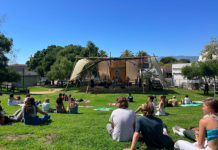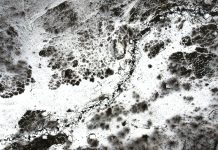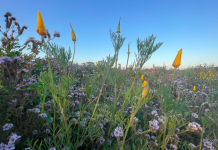Judy Lau
Staff Writer
Researchers at the University of California, Santa Barbara, received funding from the National Oceanic and Atmospheric Administration (NOAA) to study the effect of pH variability on the early life stages of the cabezon, a kelp forest sculpin.
Gretchen Hofmann, one of the seven recipients of a California Sea Grant Core Award, is currently researching the impact of ocean acidification on the early life of the cabezon (Scorpaenichthys marmoratus), a bottom-dwelling sculpin that lives in California’s kelp forests.
Scientists expect that coastal regions will be vulnerable to ocean acidification in the future as the resident animal and plant life in the kelp forests face inadequate oxygen and low pH. The Hofmann Lab is currently examining the organism-environment interactions of the cabezon eggs and their relationship with the carbon dioxide (CO2) levels in the blood as well as oxygen levels and temperature in the kelp forest habitat.
“There are currently no studies in California that look at the early stages of fish,” said Umihiko Hoshijima, a second-year graduate student in the Hofmann Lab. “What we want to do is look at the vulnerable early stages of this fish and see how the acidic conditions impact their early development. Through this, we hope to get a better idea of how the community as a whole is impacted by the change in carbon dioxide and oxygen in the ocean.”
Hoshijima and the team will utilize SeaFET sensors that record pH levels and monitor the natural variability that arises from upwelling, which occurs when winds bring cold water up from ocean depths where oxygen has been replaced by CO2. This technology was developed by Professor Todd Martz, a collaborator at UC San Diego’s Scripps Institution of Oceanography.
“The higher the amount of CO2 in the water, the lower the pH is,” said Hoshijima. “We are currently not sure of the effect of pH in the early stages of the species. A lot of studies have been done on adult fish, who have time to adjust to the changing pH of the water. However, we want to look at how it affects the early stages of the species in terms of growth and brain development.”
The sensors will document conditions within the kelp at an existing research project site at Mohawk Reef. Subsequently, Hoshijima will collect eggs to bring to the laboratory under varied parameters based on sensor measurements.
“Once we collect the eggs, we will be able to study their growth under microscopes,” said Hoshijima. “The eggs are transparent, so we are able to see how they grow, their energy usage, oxygen consumption, and survival capacity.”
The project will explore the importance of genetics and impacts on gene expression. Hofmann and Hoshijima want to be certain whether the genetic makeup of certain cabezon make them more resistant to pH change.
“I want to be able to understand the impacts and the mechanism on how they affect the cabezon,” said Hoshijima. “I want to see what is happening and why it is happening on a biological level.”
Headquartered at UCSD’s Scripps Institution of Oceanography, the National Sea Grant College Program is a network of 33 university-based programs dedicated to conservation and sustainable use of the nation’s coastal and marine resources.
















